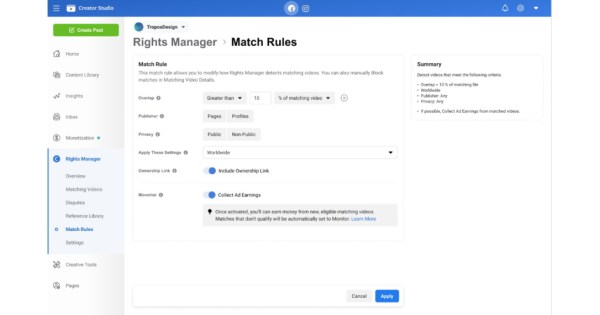TikTok, the wildly popular social media platform, has taken the world by storm with its short-form videos that capture the attention and imagination of millions of users worldwide. As the app continues to dominate the global market, questions arise about how does TikTok make money from its massive user base and viral content.
One of the main ways TikTok generates revenue is through advertising. As the platform boasts over 1 billion active monthly users, it has become an attractive advertising space for businesses looking to reach a younger demographic. Companies can advertise on TikTok through various formats, such as in-feed ads, brand takeovers, sponsored hashtags, and branded effects. These ads appear seamlessly within user feeds, fostering engagement and maximizing the effectiveness of the advertisement.
Beyond advertising, TikTok also offers a range of monetization features for its creators. The platform has a virtual currency called “coins” that users can purchase and send to their favorite creators as a form of virtual tipping. Creators can then convert these coins into real money.
TikTok’s recently introduced Creativity Program Beta to replace the Creator Fund provides financial incentives to popular creators. This program not only helps creators financially but also encourages them to continue producing engaging and high-quality content, ultimately supporting the platform’s growth and revenue generation.
Overview of TikTok
Since its launch in 2016, TikTok has experienced remarkable success and has revolutionized the way people create and consume video content.
TikTok was created by the Chinese company ByteDance and was initially launched as Douyin in China. In 2017, TikTok expanded its reach internationally, targeting markets such as the United States and India. Its unique algorithm-driven content delivery system quickly gained traction among users, propelling TikTok to the forefront of the social media landscape.
A key milestone was achieved in 2018 when TikTok merged with the lip-syncing app Musical.ly, which had a substantial user base primarily consisting of teenagers and young adults. This merger helped TikTok gain a larger presence in international markets, allowing the company to tap into the popularity of short-form video content.
TikTok’s user base continued to grow rapidly, surpassing the one billion mark in 2021. The platform has attracted a diverse range of content creators, influencers, and brands, with users spending a significant amount of time engaging with the app’s viral challenges, dances, and trends.
Now let’s explore how TikTok makes money. As with many social media platforms, TikTok generates revenue through various streams. TikTok’s business model primarily revolves around advertising, virtual gifting, and potential e-commerce initiatives. The platform’s ability to capture users’ attention, coupled with its innovative content delivery system, has enabled TikTok to attract a broad range of advertisers who see the platform as a valuable marketing channel.
TikTok Primary Revenue Streams
With its massive user base and engaged community, TikTok has built multiple revenue streams to monetize its platform effectively. TikTok’s primary revenue streams include advertising, virtual gifting, and e-commerce. Understanding how TikTok makes money is crucial for businesses looking to tap into this rapidly growing platform and leverage its immense potential for revenue generation.
Advertising
Advertising plays a pivotal role in driving TikTok’s revenue. The platform offers various advertising opportunities for brands looking to reach a massive and diverse audience. Some of the advertising options available on TikTok include:
Brand Takeovers: TikTok allows advertisers to take over the app for a day, capturing the user’s attention as soon as they open the app. Brand takeovers typically consist of a full-screen ad, either an image or a video, that appears instantly when users launch the app. This ad format allows brands to make a lasting impression and drive immediate engagement. Advertisers can also direct users to a landing page or a hashtag challenge to maximize their campaign’s impact.In-Feed Ads: These are native ads that seamlessly appear in users’ For You Feed, where they spend most of their time browsing TikTok content. In-feed ads are similar to regular TikTok videos but are labeled “sponsored” and can be up to 60 seconds long. By blending in with organic content, in-feed ads have a higher chance of attracting user attention compared to traditional banner ads.Hashtag Challenges: TikTok’s unique feature of hashtag challenges has become a favorite among advertisers. Brands create a challenge by setting a theme and inviting users to create videos around it using a specific hashtag. This user-generated content helps brands generate buzz and reach a wider audience organically. Advertisers can also opt for the Brand Takeover or In-Feed Ads to promote their hashtag challenge, ensuring maximum visibility.Branded Effects and Filters: TikTok offers a wide range of creative tools, effects, and filters that users can apply to their videos. Advertisers can create customized branded effects and filters, allowing them to engage with users directly through their content. These effects can be tied to specific campaigns or promotions, further enhancing brand visibility.
TikTok generates revenue by charging brands for their advertising campaigns. Advertisers can choose from various pricing models, including cost-per-click (CPC), cost-per-impression (CPM), or cost-per-action (CPA). The cost depends on factors like ad format, targeting options, and campaign objectives.
With its skyrocketing user base, TikTok has become an advertising goldmine for brands looking to tap into the app’s immense reach and engaged audience. The revenue generated from advertising plays a significant role in TikTok’s overall revenue growth, allowing the platform to continue enhancing its features, expanding its user base, and investing in new technologies.
Coins and Virtual Gifting
Virtual gifting on TikTok works through a digital currency called “coins.” Users can purchase these coins with real money, and then they can use these coins to buy virtual gifts such as stickers, emojis, and animations to send to their favorite content creators during live streams or on their videos.
By providing this virtual gifting feature, TikTok creates a win-win situation for both its users and content creators. Users get the opportunity to show their support and engage with their favorite creators on a deeper level, while the creators receive monetary rewards for their efforts.
Upon purchasing a virtual gift, TikTok takes a cut from the transaction, which contributes to its overall revenue. TikTok takes around 50% of the value of virtual gifts provided to influencers on the platform. This revenue model has proven to be highly successful for the platform, as users worldwide are increasingly engaging in virtual gifting.
Creators on TikTok benefit from virtual gifting in two ways. Firstly, it provides them with a direct and immediate source of income. As they accumulate virtual gifts, creators can convert those gifts into real money, which is then transferred to their account by TikTok. Secondly, virtual gifting helps content creators grow their audience and increase their visibility on the platform. When users send virtual gifts, their names are highlighted, which encourages others to engage with their content and potentially become new followers.
Virtual gifting also drives engagement on the app and promotes a sense of community. Users feel more connected to their favorite creators by being able to support them financially, and the creators, in turn, feel appreciated and motivated to produce quality content. This cycle of support and engagement further strengthens TikTok’s position as a leading social media platform.
E-Commerce Integrations
Integrating e-commerce capabilities directly into the platform, TikTok has further capitalized on its influence as a shopping destination. In the last quarter of 2022, TikTok launched TikTok Shop to expand into e-commerce. By partnering with brands, the app enables users to easily shop for products featured in videos without leaving the app. These seamless shopping experiences, with a simple tap of the screen, lead users straight to the product page, encouraging impulse purchases.
To boost conversions and encourage users to shop, TikTok provides engaging, visually appealing content created by influencers and brand ambassadors. These content creators seamlessly incorporate products into their videos, showcasing how they can be used and influencing purchase decisions. Brands compensate influencers for brand endorsements, driving additional revenue for TikTok.
TikTok’s e-commerce revenue stream also benefits from its shoppable livestream feature. This feature allows brands to host real-time product demonstrations, flash sales, and Q&A sessions, creating a sense of urgency and excitement for viewers. Users can directly interact with the host, ask questions, and make purchases in real time. This innovative feature sets TikTok apart from other social media platforms and contributes significantly to the company’s revenue.
In addition, TikTok collects a percentage of sales made through its platform, further bolstering its revenue streams. This revenue share model provides an incentive for brands to utilize TikTok as a marketing channel and motivates them to drive sales through the platform.
Other TikTok Sources of Income
TikTok LIVE Subscription
TikTok LIVE Subscription is an important feature that allows TikTok to monetize its platform by offering a direct revenue stream through user subscriptions. This monthly subscription service enables users to financially support their favorite LIVE creators, providing TikTok with a steady flow of income while enhancing user engagement and loyalty. TikTok takes a cut (35%) from each subscription paid by viewers of creators on the platform.
Some of the benefits of this source of revenue include:
Revenue from Subscriptions: TikTok generates revenue from the subscription fees paid by users. By offering a range of subscription tiers and pricing options, TikTok can appeal to a broad audience, maximizing its potential income. A portion of these subscription fees is retained by TikTok as a service charge, contributing significantly to the platform’s overall earnings.Enhanced User Engagement: The exclusive benefits provided through TikTok LIVE Subscriptions—such as Subscriber Badges, Subscriber-Only LIVEs, Custom Emotes, and Subscriber-Only Chats—encourage users to subscribe and remain active on the platform. Higher engagement levels lead to increased usage, which in turn boosts TikTok’s ad revenue and other monetization opportunities.Creator Retention and Content Quality: By enabling creators to earn a steady income through subscriptions, TikTok ensures that top content creators are motivated to stay on the platform and produce high-quality content. This retention of popular creators attracts more viewers, increasing the platform’s user base and enhancing its appeal to advertisers and other revenue-generating partnerships.Community Building: The subscription model creates a sense of community and exclusivity among subscribers, leading to stronger user loyalty. Loyal users are more likely to participate in other monetized activities on the platform, such as purchasing virtual gifts, participating in challenges, and viewing ads. This interconnected ecosystem of revenue streams amplifies TikTok’s profitability.Scalable Income Stream: As the platform grows, the potential for subscription revenue scales accordingly. With millions of users and thousands of creators, the cumulative income from TikTok LIVE Subscriptions can become a substantial part of TikTok’s revenue model. This scalability ensures long-term financial growth and stability for the platform.
TikTok Financial Performance
TikTok has been a force to be reckoned with in the social media landscape, captivating millions of users worldwide with its creative and entertaining short videos. While its popularity is undeniable, here’s how the app has performed in terms of finance and profitability.
TikTok Annual Revenue and Profit
TikTok’s annual revenue has experienced exponential growth over the years. In 2018, the platform generated $150 million in revenue, which then surged to $350 million in 2019. However, it was in 2020 that TikTok truly made its mark, raking in an impressive $2.6 billion in annual revenue. The following year, TikTok’s revenue skyrocketed to $4.8 billion, showcasing its phenomenal growth trajectory. TikTok’s revenue surged to $9.6 billion in 2022 and a staggering $16.1 billion in 2023.
The significant increase in TikTok’s revenue can be attributed to various factors. One of the main contributors is TikTok’s advertising segment, which accounted for nearly $4 billion in ad revenue in 2021 alone. Brands and marketers have recognized the platform’s enormous reach and engaged user base, turning to TikTok to promote their products and services. This advertising revenue stream has been crucial in bolstering TikTok’s overall financial performance.
Notably, TikTok has emerged as a strong player in the US market. With a revenue market share of 26%, TikTok surpasses other major platforms like Instagram (14%) and Facebook (10%). This impressive market share highlights TikTok’s ability to attract advertisers and monetize its platform effectively.
The financial success of TikTok has also had a positive impact on its parent company, ByteDance. ByteDance, the Chinese multinational technology company that owns TikTok, was valued at a staggering $220 billion. In addition, TikTok itself boasts a brand value of $66 billion as of 2023. These figures underscore the immense potential and influence of TikTok as a revenue-generating powerhouse.
TikTok Customer Base and Target Market
TikTok boasts a remarkably diverse user base in terms of age, gender, and geography. Initially popular among teenagers and young adults, the platform has now gained traction across different demographics. According to recent data, over 60% of TikTok users are aged between 10 and 29. However, the platform has also attracted older users, with over 7% falling in the 50+ age bracket.
TikTok’s demographics can be explained as below:
Age Group: TikTok’s primary demographic consists of Generation Z, the age group between 10 and 25. This younger audience is known for their high spending power and penchant for digital content consumption, making them the key target audience for influencer collaborations and brand campaigns.Geographic Reach: TikTok’s popularity extends globally, capturing users in countries like the United States, India, China, and Brazil. This diverse geographic reach helps TikTok access a wide range of market opportunities.Gender Balance: TikTok attracts users from both genders, although there is a slight skew towards female users. The platform appeals to their creative expression and entertainment needs.
In addition to Generation Z, TikTok has gained popularity across several distinct market segments including:
Influencers and Content Creators: TikTok offers a platform for aspiring influencers to showcase their talent, creativity, and unique perspectives. Influencers, who build a significant following through their content, can monetize their presence on the platform through brand partnerships, sponsored content, and affiliate marketing.Brands and Advertisers: Recognizing TikTok’s massive reach and user engagement, brands have started capitalizing on the platform to target younger audiences. By leveraging TikTok’s sophisticated advertising tools, brands can create and promote content to increase brand awareness, generate leads, and drive product sales.Music Industry: TikTok has become a powerful platform for music discovery and promotion. Artists, record labels, and music marketers have recognized the value of TikTok in amplifying their music and connecting with fans. TikTok’s extensive music library and integration with popular streaming platforms have created new revenue streams through licensing deals and partnerships.
TikTok Challenges and Opportunities
TikTok has taken the world by storm with its creative and entertaining content. The platform has experienced rapid growth and success in recent years. However, it also faces its fair share of challenges and growth opportunities in the market. By understanding these challenges and opportunities, we can gain insights into how TikTok can navigate the market and continue to thrive in the ever-evolving world of social media.
TikTok Market Challenges
Competition: One of the biggest challenges for TikTok is the intense competition it faces from other social media platforms like Instagram, Snapchat, and YouTube. These platforms constantly evolve and introduce new features to attract users and creators, which puts pressure on TikTok to innovate and stay ahead.Regulatory Issues: TikTok has faced regulatory challenges in several countries due to concerns regarding data privacy and security. Governments have raised concerns about the app’s alleged ties to the Chinese government and its potential to compromise user data. These challenges can lead to bans or restrictions in certain regions, impacting TikTok’s user base and revenue potential.Content Moderation: As TikTok’s user base continues to grow, content moderation becomes a significant challenge. Ensuring a safe and inclusive environment is crucial for the platform’s success. TikTok has implemented strict guidelines and advanced algorithms to filter out inappropriate or harmful content, but striking the right balance between censorship and freedom of expression remains a challenge.Monetization: While TikTok has become immensely popular, monetizing the platform has proven to be a challenge. The app primarily relies on advertising as its main revenue stream. However, attracting advertisers to invest in TikTok can be challenging due to concerns about brand safety and the relatively young demographic profile of the app’s audience.
TikTok Growth Opportunities
Global Expansion: TikTok has already witnessed significant success in markets like the United States, China, India, and Brazil. However, there are still numerous untapped markets where TikTok can expand its user base and increase revenue. Targeting emerging markets in Asia, Africa, and Latin America presents an opportunity for TikTok to continue its growth trajectory.Diversification of Revenue Streams: To mitigate the risks associated with overreliance on advertising, TikTok has started exploring alternative revenue streams. The app has experimented with features like in-app purchases, e-commerce, and virtual gifting. Expanding and refining these revenue streams can help TikTok generate a more stable and diversified income.Enhancing the Creator Economy: TikTok owes part of its success to its vibrant community of creators. By offering more tools, resources, and incentives to creators, TikTok can encourage them to stay on the platform and continue producing engaging content. This, in turn, attracts more users and advertisers, leading to increased revenue potential.Partnerships and Collaborations: Collaborating with established brands, media companies, and influencers presents an opportunity for TikTok to create unique and engaging content, attract new users, and generate revenue through brand collaborations and sponsored content.
Conclusion
TikTok has emerged as a key player in revenue generation. By capitalizing on its immense popularity and implementing innovative monetization strategies, TikTok has proven its ability to convert its massive user base into significant revenue streams.
As the platform continues to evolve and adapt, we can expect further advancements in how TikTok makes money, presenting both challenges and opportunities for businesses and advertisers alike.









